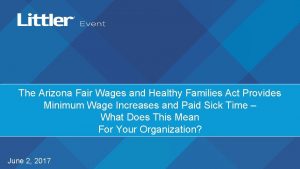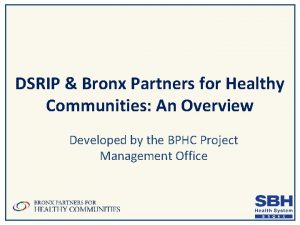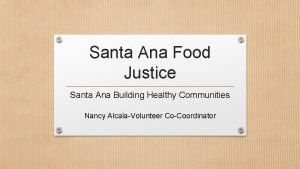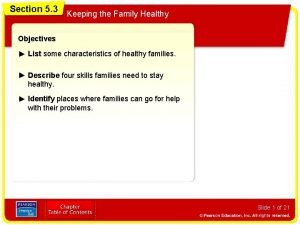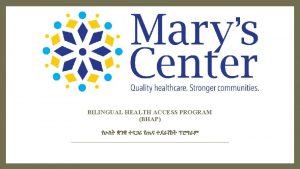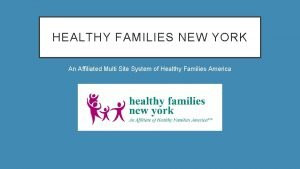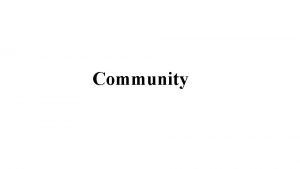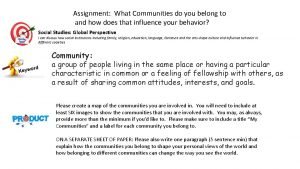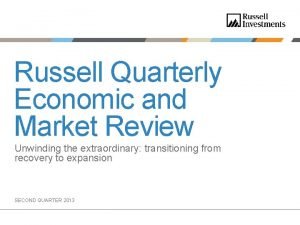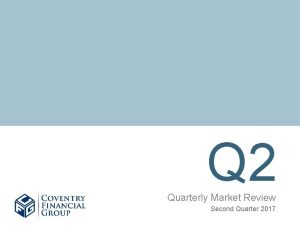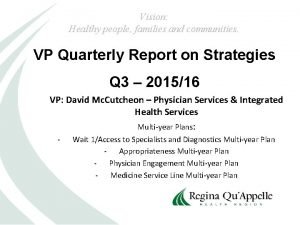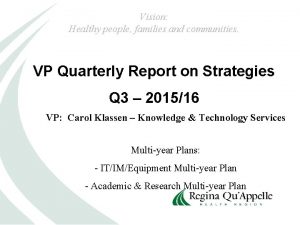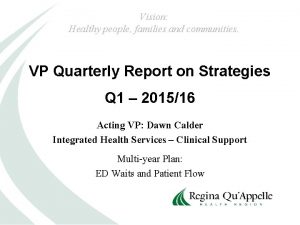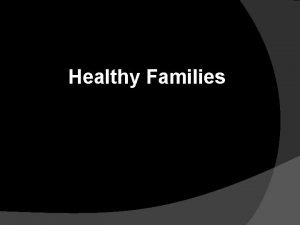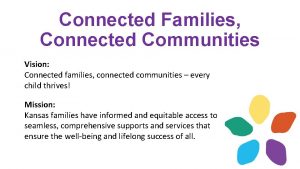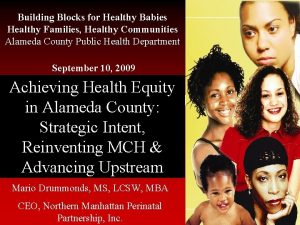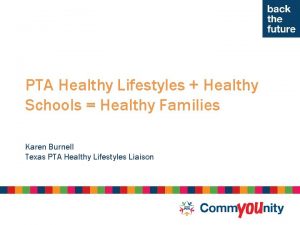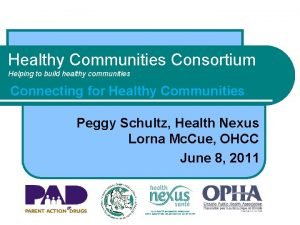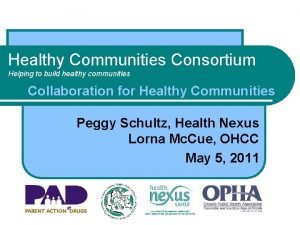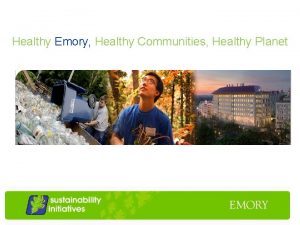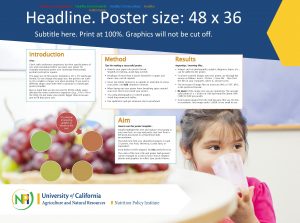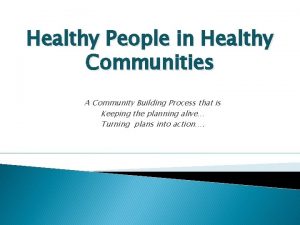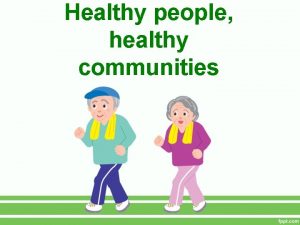Vision Healthy people families and communities VP Quarterly















- Slides: 15

Vision: Healthy people, families and communities. VP Quarterly Report on Strategies Q 3 – 2015/16 VP: Marlene Smadu - Quality and Transformation Multi-year Plans: - Patient and Family Centered Care Multi-year Plan - Patient Safety/ Stop the Line Multi-year Plan

Portfolio Overview • Regional Infection Prevention and Control • Patient Safety Office—Risk, Privacy and Access to Information • Transfusion Safety • Patient Advocate Services • Kaizen Promotion Office • Clinical Quality and Professional Practice • Advanced Care Planning

Multi Year Strategic Plan VP leading on: Patient and Family Centred Care RQHR Outcome By March 31, 2017 RQHR will have created a culture of Patient and Family Centered Care that leads to zero defects, no waits and waste from the perspective of patients and families, and that incorporates the core concepts of Patient and Family Centred Care (dignity and respect, information sharing, participation and collaboration).



2015 -16 Multi-year Plan • Transforming the system – Supporting family presence through implementation of the provincial Open Family Presence policy – Multi Disciplinary Rounds and shift to shift report at the bedside – 100% use of whiteboards – Intentional rounding/purposeful interaction – Appropriate patient centred signage

2015 -16 Multi-year Plan • Transforming the system – Cont’d – ID badges – Patient Experience Survey in RGH / PH / Rural – Patient and family advisory groups – Coordinating with provincial partners – Staff and physician education on PFCC – Policy on patients/families on interview panels – Patients and families engaged in improvement / lean work – Professional Image Policy

Patient and Family Centered Care Multi-year Plan Successes/What is working • Focusing on key drivers from driver diagram • Patient and family advisors engaged in: educating public on HH, region orientation, board meetings, flow visioning, patient experience survey/whiteboard presentations to staff, administrative quality and safety, committee, leading gemba walks, focus groups • Implemented initiatives such as multidisciplinary rounds at the bedside, white boards, safety huddles, manager rounding, purposeful interaction, Accountable Care Unit • Improved informed consent for transfusions • Implemented family friendly and evidence based PPE protocols for visitors and families of colonized isolated patients. • Beginning implementation of “real-time concern handling” • Implemented “Standards of Care” related to what patients/residents/clients can expect in care • Implemented Champions group for Advanced Care Planning, and improvement opportunities identified

Patient and Family Centered Care Multi-year Plan • Challenges/Gaps/Risks/ - Much work to spread and replicate practices redesigned by patients and frontline staff and physicians. - Lack of EHR and difficulty getting RQHR forms on physicians’ EMR, e. g. Accuro - Have not yet implemented many best practices, e. g. family presence policy, signage - Huge requirement for education/training in all areas and don’t have a region-wide integrated learning system, including monitoring • What isn’t working/What can be improved • Timely disclosure to patients/families and resolution of client concerns in real time • Patient information needs to travel with the patient—advanced directives, blood consent, etc. • “Concern handling is not a department – it is everyone’s responsibility” – processes need to continue to evolve

Patient and Family Centered Care Multi-year Plan • Next Steps: – Region-wide spread and replication of best practices in patient and family centred care – Emphasis on hand hygiene continues—aim 100% – Increased communication/education of staff, physicians, public, patients, residents, clients, families —Planning for integrated learning system – Patient Experience Survey analysis to direct improvements – Family presence policy implementation – Professional Image policy implementation

Patient Safety/ Stop the Line Multi-year Plan 2015 -16 Provincial Outcome & Improvement Targets • To achieve a culture of safety, by March 31, 2020 there will be no harm to patients or staff. o By March 2018, fully implement a provincial Safety Alert / Stop the Line (SA/STL) process throughout Saskatchewan. o By March 31, 2018, all regions and the Cancer Agency will implement the six elements of the Safety Management System. (SMS) o By March 31, 2019, all regions and the Cancer Agency receive a 75% evaluation score on the implementation of the elements of the Safety Management System o By March 2019 there will be zero shoulder and back injuries.

Getting to Green: SA/STL Model Implementation RQHR SA/ STL Roll Out Plan: • SA/ STL educational material & video – complete by Jan. 31, 2016 • Communication/education re: SA/ STL with key stakeholders January-March 31, 2016 • SA/ STL region wide roll out April 01, 2016

Patient Safety/ Stop the Line Multi-year Plan • Successes/What is working – STL Algorithm & Roles/Responsibilities document have been developed and are being used by other RHAs – RQHR SAFER model has been chosen for provincial use – STL working group has patient representatives engaged – RQHR STL is moving forward as planned with anticipated roll out date of April 01, 2016 – Confidential Occurrence Reporting Database is being kept current—trending occurring in real time – STL PDSA Trials of an electronic reporting form are complete and facility roll out will proceed in two facilities in March 2016

Patient Safety/ Stop the Line Multi-year Plan • Challenges/Gaps/Risks/What isn’t working/What can be improved – The current database and adverse event reporting system continue to present challenges. The province is looking at a potential four year process for roll out of a provincial adverse event management system – Feedback: need for clearer communication of what constitutes a Stop the Line event

Patient Safety/ Stop the Line Multi-year Plan Next Steps • Work towards implementation of the regional roll out plan • Heighten awareness of STL as a priority within RQHR & continue to work on culture change • Continue to provide leadership on multiyear plans for the two highest COR concerns—medication errors and falls
 Healthy forests healthy communities poster contest
Healthy forests healthy communities poster contest Sere in ecology
Sere in ecology Little families
Little families Prop 206 arizona pros and cons
Prop 206 arizona pros and cons Bronx partners for healthy communities
Bronx partners for healthy communities Healthy food santa ana
Healthy food santa ana Four skills families need to stay healthy
Four skills families need to stay healthy Dc healthy families
Dc healthy families Healthy families new york
Healthy families new york Nutrition and productivity
Nutrition and productivity Healthy soil healthy life poster ideas
Healthy soil healthy life poster ideas Healthy nurse healthy nation
Healthy nurse healthy nation People living in community
People living in community Which type of community do you belong explain
Which type of community do you belong explain Russell quarterly economic and market review
Russell quarterly economic and market review Russell quarterly economic and market review
Russell quarterly economic and market review



